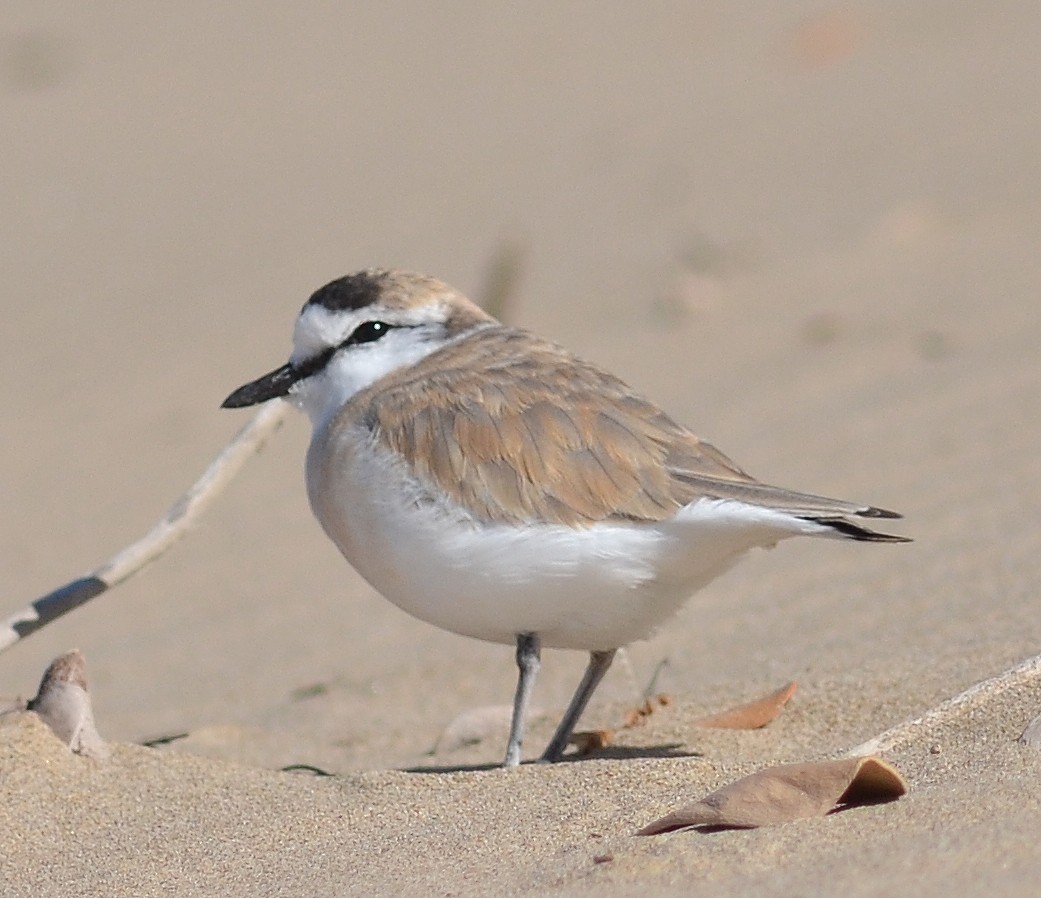White-fronted Plover
A species of Typical plovers Scientific name : Charadrius marginatus Genus : Typical plovers
White-fronted Plover, A species of Typical plovers
Botanical name: Charadrius marginatus
Genus: Typical plovers
Content
Description General Info
 Photo By Amada44 , used under CC-BY-SA-3.0 /Cropped and compressed from original
Photo By Amada44 , used under CC-BY-SA-3.0 /Cropped and compressed from original Description
The average white-fronted plover weighs approximately 45-50 g, and the two sexes differ slightly in plumage coloration. Adult male plovers show a white forecrown and supercilium, with a dark band crossing the mid crown, with the rest of the crown a sandy grey colour. The face is mainly white, with a blackish brown stripe running from behind the eye to the ear coverts. The mantle, back, and rump is light greyish brown, with pale brown to grey fringing feathers. The upper covert and central feathers of the tail are black, and the lateral feathers are white. Primaries and secondaries are dark brown with white shafts, bases, and inner webs. White-fronted plovers also have a pale dusky-brown lateral patch on the upper breast, and white underparts, occasionally with a washed chestnut lower breast and upper belly. The eyes are brown, the bill is black, and the legs are pale grey, green-grey, or pale green/olive. Adult females have a similar appearance to adult males, however the black crown band is less defined and not as thick, and may even be absent in some cases. Juveniles have similar markings to adult females, but always lack the crown band altogether, and there is no black colouration on the head- lores are brown. The lateral breast patch is very variable between individuals of this species. 
Size
18 cm
Nest Placement
Ground
Feeding Habits
White-fronted Plover consumes a varied diet including insects, crustaceans, and worms. They display a run-stop-search foraging pattern and utilize foot-trembling to disturb prey. Unique behaviors include wave-following and high tide kelp wrack feeding. Foraging adapts seasonally, with territory defense or flock foraging.
Habitat
White-fronted Plover predominantly occupies coastal environments including sandy shores, estuaries, and intertidal mudflats. It is also found along river and lake shores with preferences for open sandy shorelines and exposed sand among dry kelp wrack for nesting. Its habitat extends to rocky coasts, inland mudflats, saltpans, and even man-made structures like sewage works. White-fronted Plover roosts on beaches, away from the water, sometimes in mixed flocks or alone. It can adapt to various elevations, having been recorded at up to 1500 meters above sea level in certain regions of the Malagasy area and southern Africa.
Dite type
Insectivorous
General Info
Feeding Habits
Bird food type
Distribution Area
The white-fronted plover is endemic to sub-saharan Africa, and occurs at varying densities from Senegambia and Somalia to South Africa. The species is present along the entire South African coast and is also found inland, near large lakes and rivers. It also inhabits Madagascar. In Madagascar, breeding populations are resident on all coasts, and also inland. A genetic study reported genetic differentiation between Madagascar and the mainland population. 
Species Status
The white-fronted plover is classified as Least Concern by the IUCN due to its extremely large range, large population size, and while total population is decreasing, it appears not to do so at a threatening rate. The Madagascar population is estimated at 5,000–15,000 individuals (coastal surveys from Analalava to Tolagnaro yielded a total count of 1,457 individuals at 119 different locations), the global population at 73,500–103,500. Low nesting success may be partially compensated by multiple clutching and repeat nesting after egg loss, but overall there are too few data to reliably estimates population trends. 
Scientific Classification
Phylum
Chordates Class
Birds Order
Shorebirds Family
Plovers Genus
Typical plovers Species
White-fronted Plover